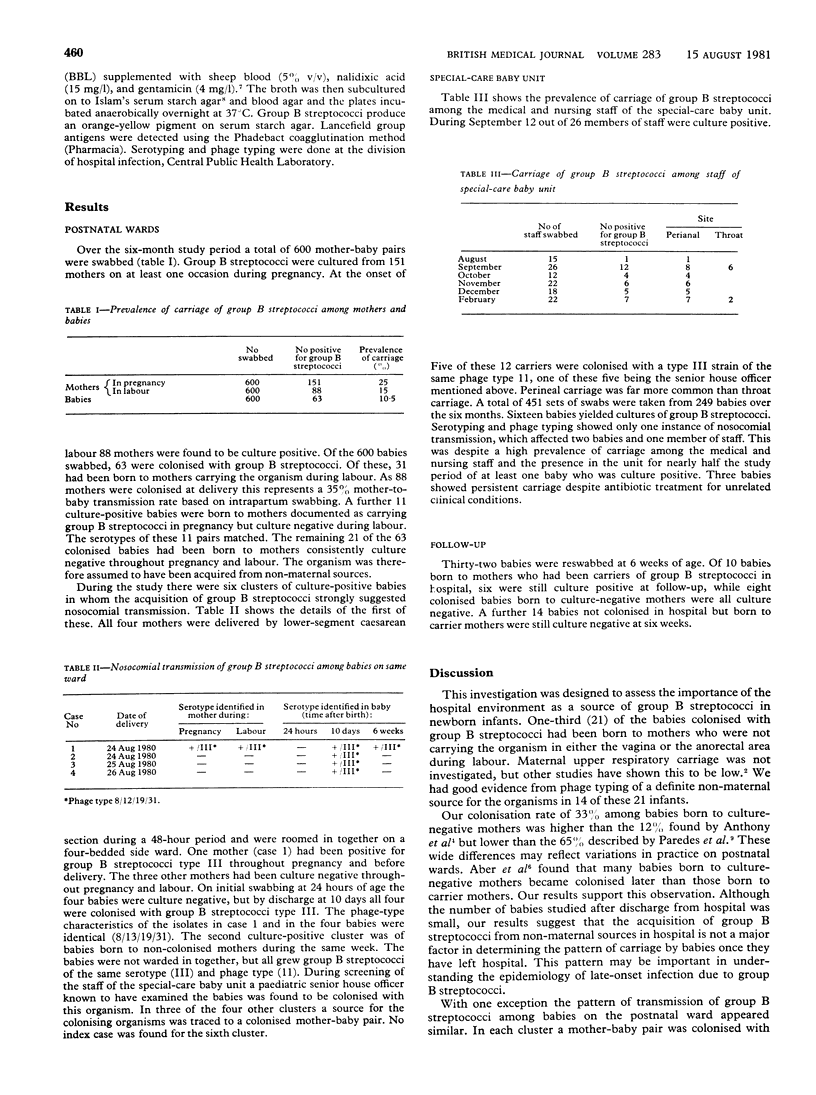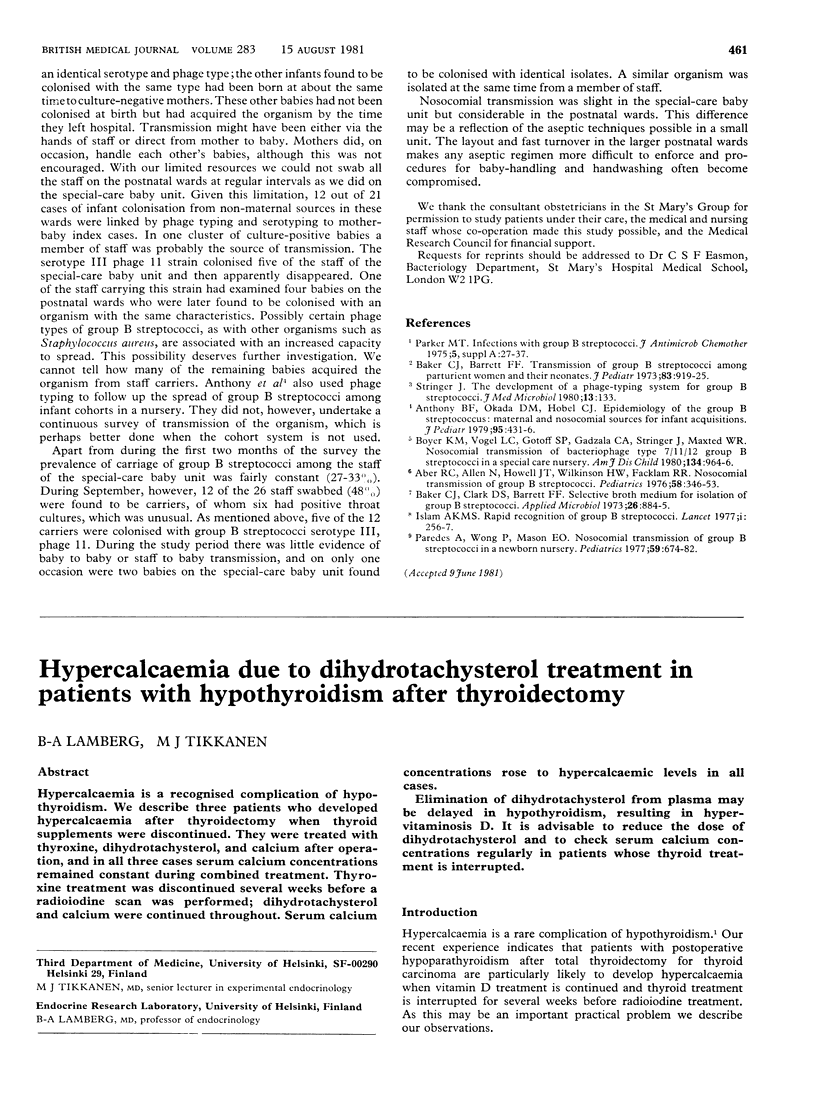Abstract
The acquisition of group B streptococci by babies in a special-care baby unit and two postnatal wards was investigated over a six-month period using serology and phage typing. Sixty-three culture-positive babies were identified in the postnatal wards, one-third of whom had been born to mothers who were not carrying the organism in the genital tract or anorectal area during labour. A non-maternal source was identified for 14 of these 21 infants: either colonised mothers and babies in the same ward or, on one occasion, a member of the hospital staff. In the special-care baby unit, however, only one instance of nosocomial acquisition of group B streptococci was recorded despite a high prevalence of colonisation in the staff on the unit and the presence of heavily colonised babies. The results of this survey suggest that although sepsis caused by group B streptococci may be the result of nosocomial transmission, this may be prevented by careful attention to hygiene.
Full text
PDF


Selected References
These references are in PubMed. This may not be the complete list of references from this article.
- Aber R. C., Allen N., Howell J. T., Wilkenson H. W., Facklam R. R. Nosocomial transmission of group B streptococci. Pediatrics. 1976 Sep;58(3):346–353. [PubMed] [Google Scholar]
- Anthony B. F., Okada D. M., Hobel C. J. Epidemiology of the group B streptococcus: maternal and nosocomial sources for infant acquisitions. J Pediatr. 1979 Sep;95(3):431–436. doi: 10.1016/s0022-3476(79)80530-2. [DOI] [PubMed] [Google Scholar]
- Baker C. J., Barrett F. F. Transmission of group B streptococci among parturient women and their neonates. J Pediatr. 1973 Dec;83(6):919–925. doi: 10.1016/s0022-3476(73)80524-4. [DOI] [PubMed] [Google Scholar]
- Baker C. J., Clark D. J., Barrett F. F. Selective broth medium for isolation of group B streptococci. Appl Microbiol. 1973 Dec;26(6):884–885. doi: 10.1128/am.26.6.884-885.1973. [DOI] [PMC free article] [PubMed] [Google Scholar]
- Boyer K. M., Vogel L. C., Gotoff S. P., Gadzala C. A., Stringer J., Maxted W. R. Nosocomial transmission of bacteriophage type 7/11/12 group B streptococci in a special care nursery. Am J Dis Child. 1980 Oct;134(10):964–966. doi: 10.1001/archpedi.1980.02130220042013. [DOI] [PubMed] [Google Scholar]
- Islam A. K. Rapid recognition of group-B Streptococci. Lancet. 1977 Jan 29;1(8005):256–257. doi: 10.1016/s0140-6736(77)91055-8. [DOI] [PubMed] [Google Scholar]
- Parker M. T. Perinatal and neonatal infections: infections with group-B streptococci. J Antimicrob Chemother. 1979 May;5 (Suppl A):27–37. doi: 10.1093/jac/5.supplement_a.27. [DOI] [PubMed] [Google Scholar]
- Stringer J. The development of a phage-typing system for group-B streptococci. J Med Microbiol. 1980 Feb;13(1):133–143. doi: 10.1099/00222615-13-1-133. [DOI] [PubMed] [Google Scholar]


